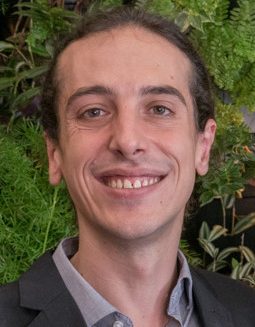
PerMedCoE webinars are open to everyone interested in PerMedCoE tools and activities. The webinars will include a 30-40 minutes presentation and a Q&A section of around 15 minutes. The recording of this webinar will be publicly available on this web page and the PerMedCoE YouTube channel.
Webinar: Introduction to qualitative modelling with MaBoSS
| Speaker | Vincent Noël (Institut Curie) |
| Date and time | Thursday 18 November 2021, 15.00-16.00 CET |
| Target group: | Anyone interested in simulation of metabolic models, and in PerMedCoE tools and activities |
| Learning outcomes: | Describe the concept of Boolean modelling Explain how to use WebMaBoSS |
| Watch the recording | |
| Access the slides |
Boolean modelling uses a simple representation of biological entities as either active or inactive, and describes their relations with logical formulas. MaBoSS extends Boolean modelling by adding a notion of continuous time, with the introduction of rates of (in)activation. This enable the representation of physical time, and of processes with different time scales. MaBoSS simulate multiple stochastic trajectories, and produces trajectories of the probabilities of the system state. This webinar will introduce the concepts of boolean modelling, and MaBoSS’ continuous time boolean modelling, and will then demonstrate the use of WebMaBoSS, a web interface designed for easily simulating MaBoSS models.

About the speaker:
Dr Vincent Noël (M) is a postdoctoral student at the Computational Systems Biology of Cancer team of the U900 in Institut Curie. His research interests concern modelling of biological systems, where he has experience in both construction and analysis of these models. He did his PhD in applied mathematics studying simplifications of ODE models, and then did his first postdoc within a molecular biology unit building a model of Ras-Mapk signaling in Y1 tumor cells. He also developed tools to simplify the construction and analysis of models, and the reproducibility of this work. He has a good experience in the optimisation of numerical simulation workflows, and has been working on MaBoSS for more than three years.





